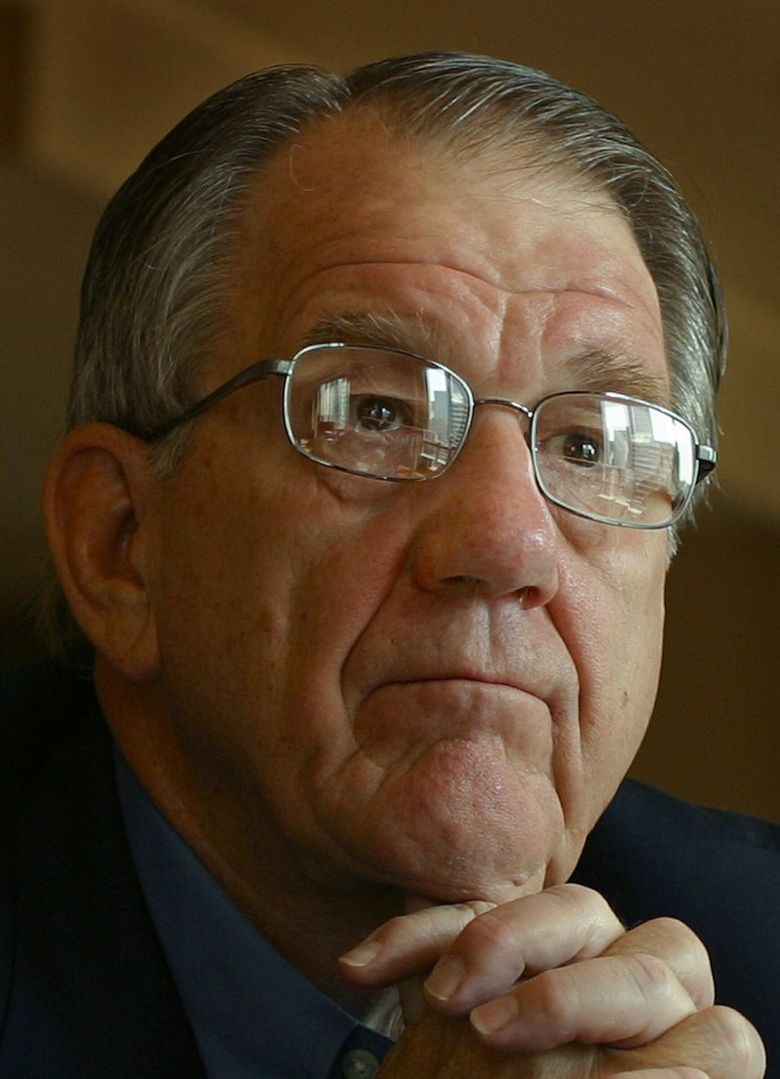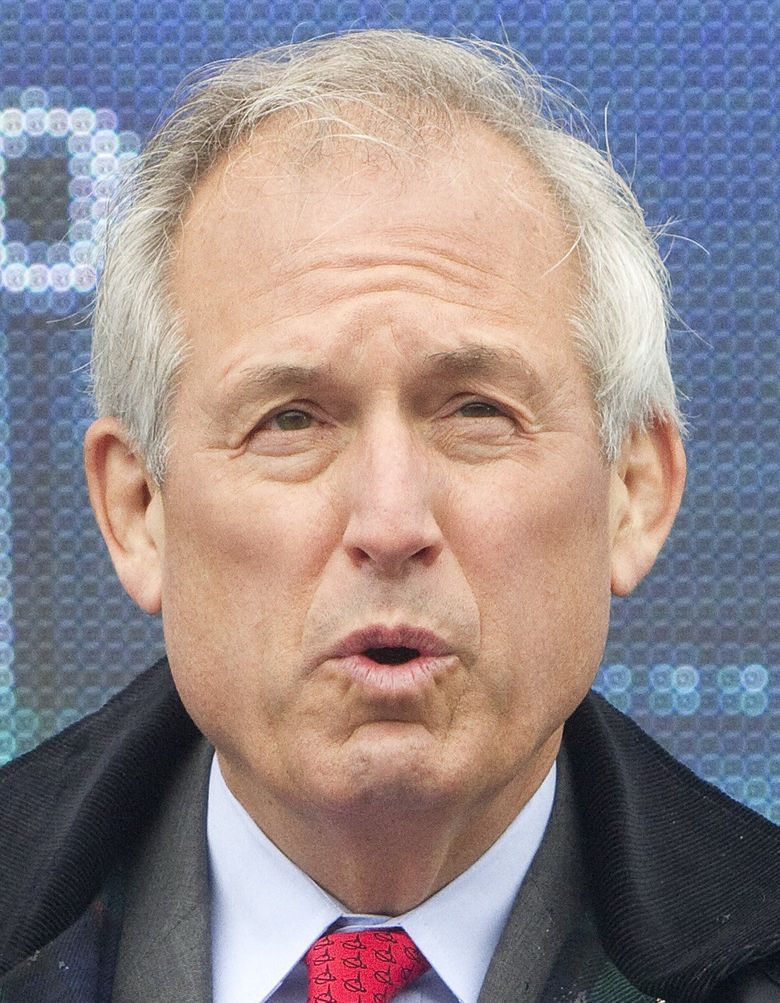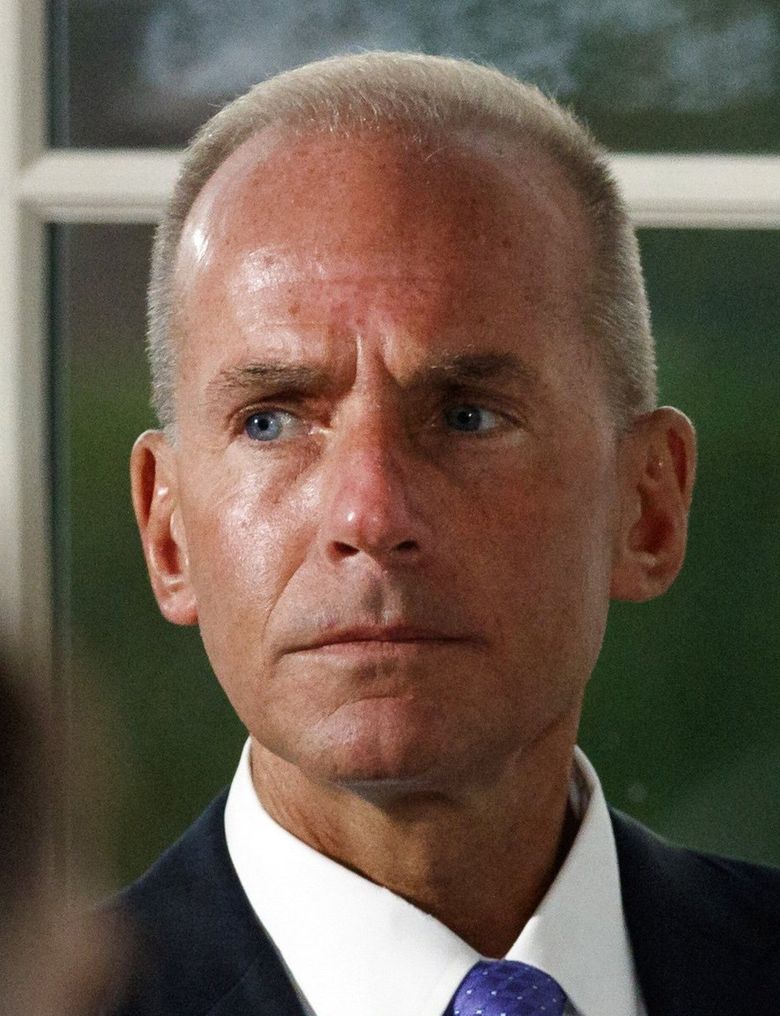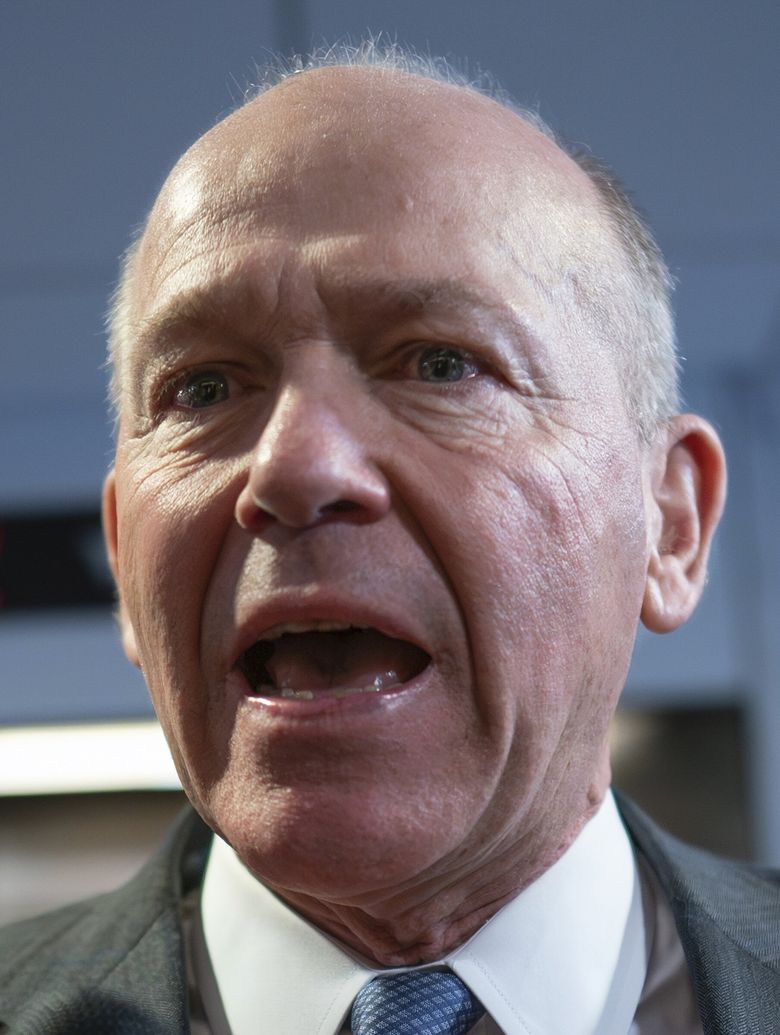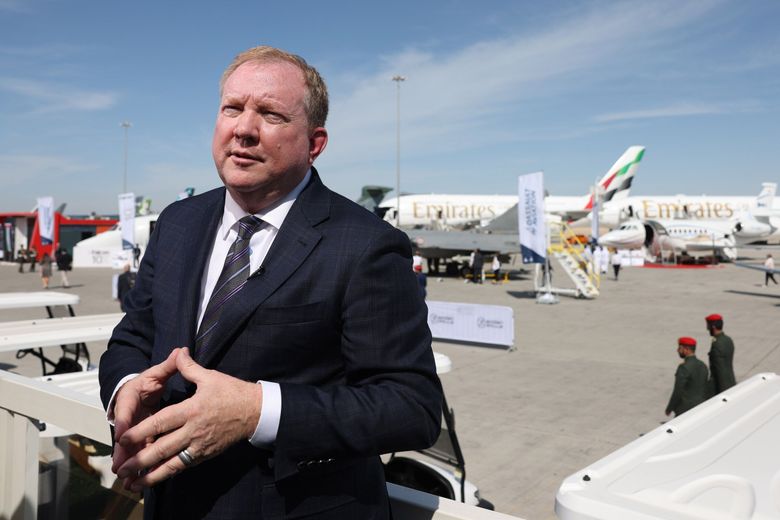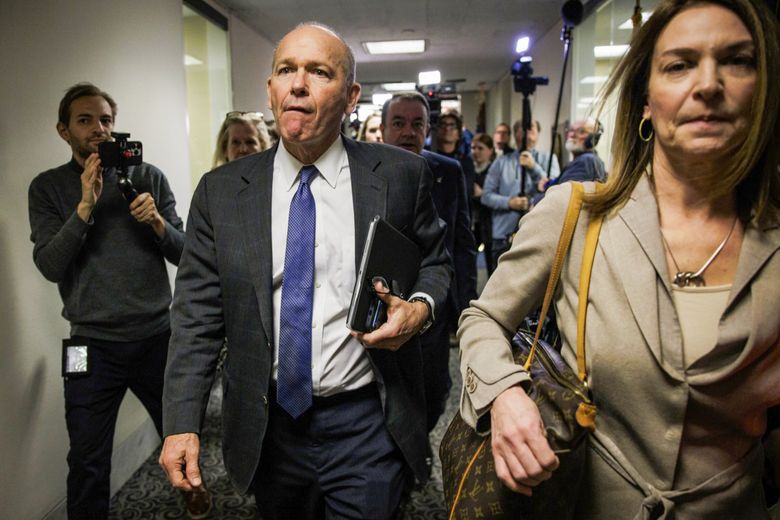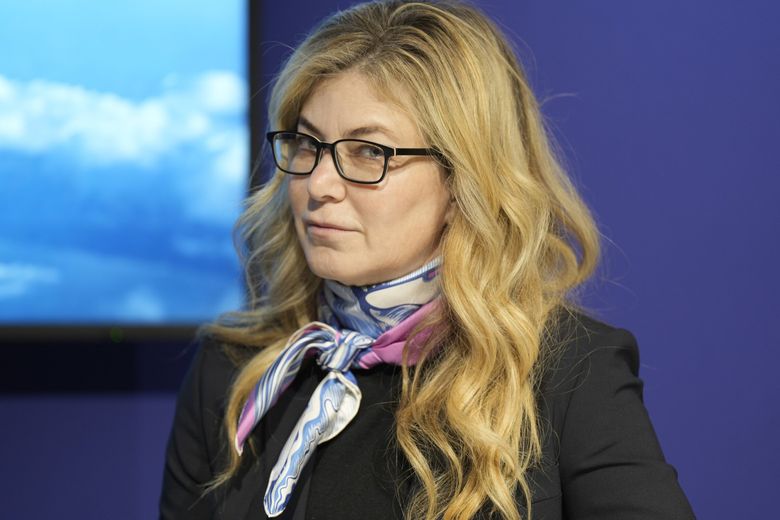Boeing CEO Dave Calhoun will step down at the end of 2024 in part of a broad management shakeup for the embattled aerospace giant.
Chairman of the board Larry Kellner is also resigning and will leave the board at Boeing’s annual meeting in May. He has been replaced as chair by Steve Mollenkopf, who has been a Boeing director since 2020.
And Stan Deal, president and CEO of Boeing Commercial Airplanes, is leaving the company effective immediately. Moving into his job is Stephanie Pope, who recently became Boeing’s Chief Operating Officer after previously running Boeing Global Services.
The departures come as airlines and regulators have been increasing calls for major changes at the company after a host of quality and manufacturing flaws on Boeing planes. Scrutiny intensified after a Jan. 5 accident, when a door plug blew out of a nearly new Boeing 737 Max 9, minutes into an Alaska Airlines flight.
“As you all know, the Alaska Airlines Flight 1282 accident was a watershed moment for Boeing,” Calhoun wrote to employees on Monday. “We must continue to respond to this accident with humility and complete transparency. We also must inculcate a total commitment to safety and quality at every level of our company.
“The eyes of the world are on us, and I know we will come through this moment a better company, building on all the learnings we accumulated as we worked together to rebuild Boeing over the last number of years,” he wrote.
Last week, airline CEOs started scheduling meetings with Boeing directors to voice their displeasure at the lack of manufacturing quality controls and lower-than-expected production of 737 Max planes. The meetings were to include Kellner and one or more other board members.
Calhoun for months has promised investors, airline customers, and the general public that Boeing will get its myriad quality struggles under control.
Calhoun was appointed to the top job in late 2019 and took the helm at Boeing in early 2020 after the company ousted its previous chief executive, Dennis Muilenburg, for his handling of the aftermath of two deadly 737 Max crashes.
Read Calhoun's full memo to staff below.
Team,
As you all know, the Alaska Airlines Flight 1282 accident was a watershed moment for Boeing. We must continue to respond to this accident with humility and complete transparency. We also must inculcate a total commitment to safety and quality at every level of our company.
The eyes of the world are on us, and I know we will come through this moment a better company, building on all the learnings we accumulated as we worked together to rebuild Boeing over the last number of years.
I want to thank each and every one of you for how you have stepped up to this challenge and for the work now underway to make sure we demonstrate to all stakeholders that the Boeing of the future is everything they should expect it to be. We have been working together for the last five years to address some of the most significant challenges our company and industry have ever faced in our 108-year history. I am confident that the way we have confronted these challenges, and how we are responding to this specific moment, is establishing standards for future generations of employees and will be woven into the fabric of how we operate for decades to come.
It is the future of our company that is the subject of my letter to you today. I have been considering for some time, in discussion with our board of directors, the right time for a CEO transition at Boeing. I want to share with you that I have decided this will be my last year as CEO of our great company, and I have notified the board of that decision.
I originally agreed to take on the role of CEO of Boeing at the board's request, stepping down as board chair in the process, because of the unprecedented circumstances the company was facing at that time. It has been the greatest privilege of my life to serve in both roles and I will only feel the journey has been properly completed when we finish the job that we need to do. We are going to fix what isn't working, and we are going to get our company back on track towards recovery and stability.
My decision to step down as CEO at the end of this year is one the board has been prepared for and will result in several changes at a management and governance level moving forward. My long-time partner in all things Boeing, our Chair Larry Kellner, has advised the board and me that he does not intend to stand for re-election at our upcoming Annual Meeting of Shareholders. The board has elected Steve Mollenkopf to succeed Larry as chair. Steve will lead the board process of selecting my successor as CEO. Larry, too, had been considering the appropriate moment to turn over the reins after more than four years as chair and 13 years on our board and concluded that the CEO selection process should be led by a chair who will stay at the helm as a partner to the new CEO.
I want to express my deepest personal thanks to Larry for his outstanding leadership over the last number of years, and I know I speak for everyone at the company when I say, nobody could have worked harder or longer hours in dedication to his duties. Perhaps first, among the many legacies of his tenure, is profoundly strengthened governance at our company, including through his recruitment of several superb new board members, and his work with others on the board to establish our independent standing board aerospace safety committee. Larry is a professional in every way and someone to whom Boeing owes a great debt of gratitude.
I also want to thank Steve for his willingness to take on the role of chair. Steve has had a long and extraordinarily successful career with decades of experience as both the CEO of Qualcomm and a board member of several important public companies. Since joining the Boeing board, his contribution has been extremely valuable and his professional background as an engineer will serve him and the company well in this new role. I look forward to working with him for the remainder of this year to ensure a smooth transition.
In addition to these changes, Boeing Commercial Airplanes President and Chief Executive Officer Stan Deal will retire from the company and Stephanie Pope will lead our BCA business, effective today. I want to thank Stan for his many contributions and dedication since first joining our ranks 38 years ago, and for his tireless service as our BCA leader during an uncommonly difficult period for our company and for our industry.
I also want to thank Stephanie for taking on this critical role. With nearly 30 years of experience at Boeing, including her successful tenure leading our global services business, Stephanie knows our company inside and out and has a proven track record of superb leadership, including an innate talent for listening and responding to our people. Stephanie is a third-generation Boeing employee. She is deeply committed to our company, to our employees, and to our shared future; and she is the perfect person to take on the leadership of our commercial airplanes business at this moment.
As we begin this period of transition, I want to assure you, that we will remain squarely focused on completing the work we have done together to return our company to stability after the extraordinary challenges of the past five years, with safety and quality at the forefront of everything that we do.
Thank you,
Dave
Boeing CEO Dave Calhoun on Monday will soon join what’s become an inauspicious group — the fraternity of former Boeing chief executives.
Since Philip Condit’s appointment in 1996, four of the five CEOs have left in the aftermath of professional or personal scandals. Calhoun is among them; brought in after two fatal 737 MAX crashes, his departure follows an in-flight blowout believed to have been caused by assembly mistakes made at the troubled aerospace giant’s Renton plant.
Over 28 years, the five Boeing leaders’ tenures lasted between 15 months to a decade. Take a look back at the dynamic, sometimes disastrous periods of those leaders.
Philip Condit, 1996-2003
Number of Boeing employees in Washington during the final year: 54,100
Condit’s tenure at Boeing reshaped the company and ended following a year of ethical lapses and financial woes.
Condit engineered the merger with rival aerospace giant and defense contractor McDonnell Douglas in 1997. In the Northwest, though, he may be best remembered as the leader who in 2001 moved Boeing headquarters from Seattle to Chicago.
In his final year, Boeing’s military and space work generated more money than commercial airplanes, and, for the first time, Airbus surpassed Boeing in commercial airplane manufacturing.
He resigned in 2003 after Boeing Chief Financial Officer Mike Sears was sentenced to four months in prison for illegally offering a job to the top Air Force procurement officer. He offered his resignation “as a way to put the distractions and controversies of the past year behind us,” he said in a statement at the time.
Harry Stonecipher, 2003-2005
Number of Boeing employees in Washington during final year: 62,100
Stonecipher, the former president and CEO of McDonnell Douglas, and Boeing president and COO from 1997 to 2001, lasted 15 months as Boeing CEO. He resigned on March 6, 2005, at the company’s request because of what the company called a consensual relationship with a female executive.
The relationship didn’t affect Boeing's business operations, an internal investigation found but suggested issues of poor judgment. It was also seen as another ethical lapse for a company that had been trying to put two years of scandal behind it. Chief Financial Officer James Bell stepped in as interim CEO following Stonecipher’s departure.
James McNerney, 2005-2015
Number of Boeing employees in Washington during the final year: 79,200
McNerney retired as CEO after a decade of record aircraft sales, though that included several years of troubles with the 787 Dreamliner program where jet deliveries were delayed and Dreamliners were grounded for three months because of overheating batteries.
McNerney, described as a relentless pusher for efficiency and lower costs, redrew the map of Boeing’s manufacturing and engineering sites. He expanded the South Carolina Boeing site into a full-fledged commercial jet assembly center, breaking the Puget Sound region’s traditional hold on that central Boeing role and bringing criticism from the region.
Boeing acquired the South Carolina 787 plants not out of any grand McNerney vision, but because its outsourcing partners had failed.
The Renton 737 plant raised its production to double the number of jets per month compared with when McNerney took over, and Washington state’s Boeing employee count grew by nearly 40%.
Dennis Muilenburg, 2015-2019
Number of Boeing employees in Washington during the final year: 71,800
Muilenburg was ousted in the aftermath of the 737 MAX crashes, which killed a combined 346 people, and were both initiated by a malfunctioning sensor.
He drew condemnation for his handling of the crashes, initially refusing to accept any blame and instead pointing to the Lion Air and Ethiopian Airlines pilots in the crashed flights. He was fired nine months after all 737 MAX airplanes were grounded worldwide.
Dave Calhoun 2020-2024
Number of Boeing employees in Washington during the final year: 66,800 (in 2023)
Appointed amid the MAX disaster, Calhoun’s tenure was immediately rocked by a second calamity — the COVID-19 pandemic, which curtailed global travel.
The fallout from a Jan. 5 midair blowout on an Alaska Airlines 737 MAX 9 prompted his departure, plans for which were announced Monday. Calhoun will step down at the end of 2024.
Eleven weeks after a panel exploded out of an Alaska Airlines 737 MAX, the loss of public confidence and reputational damage to Boeing triggered a seismic shake-up in the company’s top leadership Monday.
Appointed amid a crisis four years ago and struggling to manage the series of deep shocks that followed, Boeing CEO Dave Calhoun will step down at the end of the year, the top line in the major leadership shift.
In addition, Stan Deal, the CEO of the Boeing Commercial Airplanes unit directly in charge of production in the Renton and Everett assembly plants, is ousted. He’s retiring from the company, replaced immediately by Stephanie Pope, who in January was promoted to chief operating officer.
Also, Boeing board Chair Larry Kellner, on the company board for 13 years and chair since 2019, announced he won’t stand for reelection at Boeing’s annual meeting in May.
Steve Mollenkopf, former CEO at wireless tech company Qualcomm who was appointed to the board of directors in 2020, replaces Kellner immediately as board chair and will lead the CEO search.
The board met over the weekend on a teleconference to approve the changes.
Having new people take over these three key leadership positions — CEO, board chair, and head of Commercial Airplanes — all at the same time could have been destabilizing. So keeping Calhoun in place until the end of the year while paving the way for his successor seems a deliberate attempt to maintain stability in the transition while signaling a substantive change at the top.
Three years ago, the board extended the mandatory retirement age for Calhoun, who turns 67 next month.
Since the Alaska Flight 1282 incident, he has implemented several very significant strategy changes.
Earlier this month, to try to fix the quality issues at Spirit AeroSystems, Boeing announced it is in discussions to buy the Wichita, Kan.-based supplier. That would reverse the outsourcing of a major plant that was sold off to a private equity firm two decades ago.
And Calhoun has pushed to stop planes from moving forward in production if they have a significant amount of unfinished work.
Interviewed Monday on CNBC, Calhoun said that pushing a jet with incomplete work down the assembly line, “sends a message to your own people that, wow, I guess the movement of the airplane is more important than the first-time quality of the product.”
Implementing this complete about-face from what has been the norm for years, CFO Brian West said last week Boeing will no longer accept 737 MAX fuselages from Spirit that require out-of-sequence work in Renton.
The board’s letting Calhoun stay until year-end suggests its members continue to have some faith in him and in these major changes he’s got underway.
Kellner in a statement announcing his stepping down from the board said “Boeing plays an essential role in our world.” He added that he trusts Calhoun to “finish the job this year that he started in 2020 to position Boeing, and our employees, for a stronger future.”
A needed change
Yet late last week, the writing seemed to be on the wall for Calhoun when major U.S. airline leaders — Boeing’s top customers — signaled a loss of confidence in his leadership by asking to meet this week with Boeing’s board without him.
On Monday, the news of the management changes was welcomed by industry observers as inevitable given the deluge of bad news from Boeing since the beginning of the year.
In a statement Monday, U.S. Rep. Rick Larsen of Everett, the lead Democrat on the House Transportation & Infrastructure Committee, said “Boeing’s new leadership team must work hard to earn back the trust of its customers and the flying public.”
“That starts with Boeing getting back to its roots as an engineering company and away from its multi-decades focus of being a financial services company,” Larsen said. “The women and men who work at Boeing need leaders who match their commitment to safety and quality.”
Veteran aviation analyst Adam Pilarski of consulting firm Avitas — who in late January predicted with a “high probability Dave Calhoun will not survive long as CEO” — said in an interview that replacing Calhoun is critical for Boeing’s future.
“Getting rid of Stan [Deal] is I think secondary. He was not driving Boeing. He was a bureaucrat who had to run his division,” Pilarski said.
While it’s true, he said, that Calhoun had no control over the disastrous impact of the COVID-19 pandemic on the aerospace industry, the CEO failed to act where he could have done more.
“I think the criticism that Boeing thought too much about financial metrics, not operational details and not the work culture, yeah, I think he deserves some of the blame,” Pilarski said. “He definitely wasn’t the hands-on leader that can motivate and inspire people.”
Pilarski also welcomed the departure of board chair Kellner, who was chief financial officer of a bank before entering the aviation industry as CFO of Continental, where he later became CEO.
“He is 100% a financial guy,” Pilarski said.
Another longtime aviation analyst, Richard Aboulafia of AeroDynamic Advisory, has called publicly for Calhoun’s ouster since last year.
“I’m deeply happy about the news,” Aboulafia said in an interview Monday. “It’s going to be a long road back, but at least they’re on the right path.”
Aboulafia added that Deal’s ouster was needed, too, because he didn’t show enough leadership.
“Whether it’s manufacturing culture, whether it’s product strategy, whether it’s company strategy, whether it’s labor relations, every aspect of [Deal]’s tenure was marked by complacency,” he said.
In a social media video post on X, formerly Twitter, Michael O’Leary, CEO of key 737 MAX customer Ryanair, welcomed Monday’s “much needed” management changes.
“Stan Deal has done a great sales job for Boeing for many years. But he’s not the person to turn around the operation in Seattle and that’s where most of the problems have been in recent years,” O’Leary said.
Due to the current MAX production slowdown, Boeing jet deliveries have been sparse so far this year. O’Leary said he looks forward to working with Pope “to eliminate Boeing delivery delays” for this summer and fall.
In a statement, Ray Goforth, executive director of Boeing’s white-collar union, the Society of Professional Engineering Employees in Aerospace, said “The problems in Boeing’s executive suite are systemic.”
“Nothing is going to change for the better without Company leadership acknowledging their failures and thoroughly committing to fixing them,” he said.
Jon Holden, president of the International Association of Machinists District 751, in an interview, said Boeing workers “have been frustrated for quite some time. And we had hoped we were turning a corner.”
“It’s important to us that the next leaders, whoever they’re going to be, will prioritize quality and safety with the production system,” he said. “We have a lot at stake. The community has a lot at stake.”
Holden said the IAM will seek a seat on Boeing’s board in its current contract negotiations.
He said the board should have representatives of both the machinists and engineers to give company leadership a firmer understanding of the production and quality management systems and ensure that Boeing delivers safe, high-quality airplanes.
Boeing shares rose Monday on news of the leadership changes, closing up $2.53 or 1.3% at $191.38.
Boeing data on executive financial holdings filed this month show the changes announced Monday were not contemplated less than two weeks ago.
On March 13, both Calhoun and Deal were granted stock options set to vest in 2027, which they won’t now see.
Those filings show that, subtracting those new options that won’t vest, Calhoun owns Boeing stock that at today’s price is worth about $32 million. Deal’s existing shares are worth about $14 million and COO Pope’s $10 million.
Intense pressure
Calhoun in a letter to employees Monday called the Alaska Airlines Flight 1282 accident “a watershed moment for Boeing.” Yet even as he announced the looming end of his tenure, he struck an optimistic tone for the future of the company.
“The eyes of the world are on us, and I know that we will come through this moment a better company,” Calhoun wrote. “We are going to fix what isn’t working, and we are going to get our company back on the track towards recovery and stability.”
Calhoun became Boeing CEO in January 2020, replacing Dennis Muilenburg, who was fired in the aftermath of the MAX crashes.
“It has been the greatest privilege of my life to serve Boeing,” Calhoun told employees.
Boeing has been under intense regulatory scrutiny and legal pressure after a series of high-profile technical issues — including misdrilled holes in a structural bulkhead at the rear of the passenger cabin and poorly installed fittings that fasten the vertical tail fin to the fuselage — that brought the quality of its manufacturing into question.
The Alaska Airlines accident on Jan. 5 renewed concern that the quality lapses had become a threat to the safety of the flying public.
A federal investigation by the National Transportation Safety Board and a grand jury investigation by the Department of Justice are looking at the cause and assessing what the consequences should be.
In the meantime, the Federal Aviation Administration, which after the fatal 737 MAX crashes was already tracking Boeing’s performance, cracked down with an order that Boeing postpone its planned production ramp-up while its manufacturing and quality systems undergo a strict audit.
Calhoun told CNBC the FAA will be at Boeing throughout this week, going through a 30-day plan to get control of the quality management system, with the auditors returning each month for another assessment.
“We’re going to have to demonstrate progress in each one of those moments,” Calhoun said.
Possible successors
There are a limited number of people who could be considered to replace Calhoun.
When Pope, 51, was surprisingly elevated to COO, Boeing’s No. 2 leadership position, it seemed she was being groomed to take over the top spot one day.
Now in charge of the key Boeing Commercial Airplanes division, Pope could become Boeing’s first female CEO if she can impress in that role for the remainder of this year.
In a note to investors Monday, Tony Bancroft, an aerospace analyst with the Gabelli Funds investment firm, said Pope did well in her previous job running Boeing’s Global Services unit and “is considered a top performer at Boeing.”
Yet she faces tremendous challenges and will have a limited time to achieve a marked turnaround.
She must fix the production issues; clear the inventory of parked MAXs and 787s by year-end; deal with disappointed and angry airline executives like O’Leary; and handle labor relations sensitively as the Machinist union contract negotiations come to a climax in late summer.
In addition, Pope shares with Calhoun a demerit in the eyes of many inside Boeing: she has a finance background, with a degree in accounting and an MBA. Earlier in her career, she was chief financial officer at both the Commercial Airplanes and Global Services units.
Boeing has conceded it has a culture problem that historically emphasized financial factors over quality and safety. To turn that around, many inside and outside the company deride the notion of putting another “bean counter” in charge.
Another candidate, an outside option, could be Wes Bush, the retired engineer and former CEO and chair of Northrop Grumman, which he led to become a prime U.S. defense contractor.
The delay in Calhoun’s departure seems to leave a pathway for another potential candidate to succeed him, one who would qualify as both an insider and an outsider.
That’s Pat Shanahan, a former top operational executive at Boeing who was appointed in the fall as interim CEO of Spirit AeroSystems.
On CNBC, Calhoun said the negotiations underway for Boeing to acquire Spirit are “making progress” and that a deal could come “soon.”
Spirit makes the entire fuselage of the MAX and the forward fuselage and cockpit of every Boeing commercial airliner.
Calhoun said that undoing that outsourcing move is the only way to get control of production and stem the flow of unsatisfactory fuselages coming from Wichita that have caused out-of-sequence work and quality lapses in the Puget Sound-area factories.
Already, “some pretty dramatic actions have been taken,” Calhoun said. “I think Pat [Shanahan] is doing a fantastic job down there in responding to the aftermath of Alaska Air.”
Pilarski of Avitas said Shanahan would be “an inspired choice.”
Shanahan, who left Boeing to serve as deputy secretary of defense under President Donald Trump and thus missed the entire sequence of disasters since the first MAX crash in 2018, was known as a very hands-on operational leader.
Along with Carolyn Corvi, he successfully led the transformation of 737 production in Renton into a moving line in the 1990s and then finally fixed the serious production issues that delayed the introduction of the 787 Dreamliner in the Everett widebody jet plant.
Pilarski has a model airplane given to him by Shanahan, signed, “to Adam, from the guy who put Humpty Dumpty together again,” meaning the 787.
Shanahan was known at Boeing as a taskmaster, demanding results.
“He is not an easy person to work for. But he obviously knows his stuff. He knows Boeing. And he knows operations,” said Pilarski. “I would not want to work for him, but keep him in very high regard.”
Aboulafia agreed Shanahan would be a good choice that “would send an extremely strong signal in terms of redressing a tragic loss of technical and operational talent.”
The next CEO, whomever it may be, must decide on the launch of a new airplane, a decision critical to Boeing’s future and, depending on where it will be built, to the future of aerospace manufacturing in this region.
Pilarski particularly criticized Calhoun’s public declarations that Boeing won’t be launching an all-new jet for years.
The analyst said that while he understands that was a message to comfort shareholders — who would worry about the financial impact of Boeing embarking on a giant investment project — he considers it tantamount to telling the industry and Boeing’s own employees that they don’t have a future.
On CNBC Monday, Calhoun said his successor needs to be someone “who knows how to handle a big, long-cycle business like ours” and “development of the next airplane.”
“I would like somebody who clearly has the experience inside our industry,” Calhoun said.



